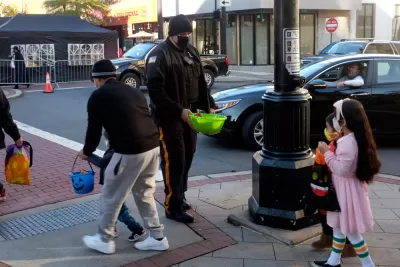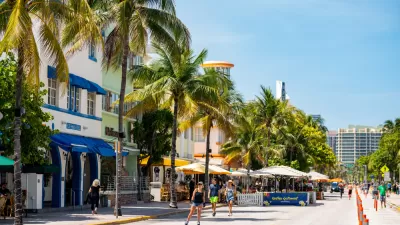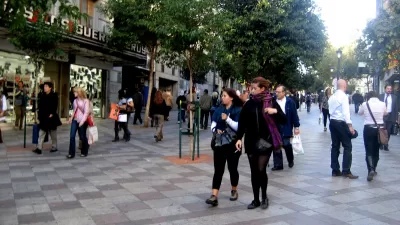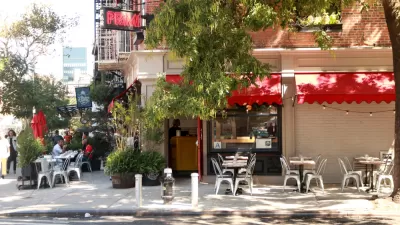Forget razor blades in apples. Henry Grabar argues the biggest threat on Halloween is much more mundane.

In an op-ed for Slate, Henry Grabar uses the annual parent panic over Halloween dangers to highlight another very real and present danger to children: cars. A CDC study showed that children are four times more likely to be killed on Halloween than on any other day.
According to an analysis in the Washington Post, 54 kids were killed by cars on Halloween between 2004 and 2018, making it by far the deadliest day of the year; no other day of the year saw more than 30 deaths across those 15 years, and most saw far less.
Grabar notes that the chance of getting struck by a car is still small, and “no more reason to keep a kid at home on All Hallows’ Eve than fear of fentanyl-flavored Skittles.” But the sharp increase in risk still warrants action, this year in particular. Grabar explains this is in part because “this Halloween falls during a historic surge in bad driving.” On top of that, pandemic-era open streets programs and other experiments with opening up more space to pedestrians have primed cities for changes.
Grabar argues for making Halloween a ‘slow driving’ day, “with trick-or-treat destinations closed to traffic, and everyone else on high alert.” Pointing out that children are known to “have a sixth sense for good design, such as generous lighting, a walkable urban fabric, calm streets, and sidewalk-facing architecture, that adults sometimes struggle to enumerate,” Grabar believes the “trick-or-treat test” should be applied to more of our streets, year-round.
FULL STORY: Ban Cars on Halloween

Maui's Vacation Rental Debate Turns Ugly
Verbal attacks, misinformation campaigns and fistfights plague a high-stakes debate to convert thousands of vacation rentals into long-term housing.

Planetizen Federal Action Tracker
A weekly monitor of how Trump’s orders and actions are impacting planners and planning in America.

San Francisco Suspends Traffic Calming Amidst Record Deaths
Citing “a challenging fiscal landscape,” the city will cease the program on the heels of 42 traffic deaths, including 24 pedestrians.

Defunct Pittsburgh Power Plant to Become Residential Tower
A decommissioned steam heat plant will be redeveloped into almost 100 affordable housing units.

Trump Prompts Restructuring of Transportation Research Board in “Unprecedented Overreach”
The TRB has eliminated more than half of its committees including those focused on climate, equity, and cities.

Amtrak Rolls Out New Orleans to Alabama “Mardi Gras” Train
The new service will operate morning and evening departures between Mobile and New Orleans.
Urban Design for Planners 1: Software Tools
This six-course series explores essential urban design concepts using open source software and equips planners with the tools they need to participate fully in the urban design process.
Planning for Universal Design
Learn the tools for implementing Universal Design in planning regulations.
Heyer Gruel & Associates PA
JM Goldson LLC
Custer County Colorado
City of Camden Redevelopment Agency
City of Astoria
Transportation Research & Education Center (TREC) at Portland State University
Jefferson Parish Government
Camden Redevelopment Agency
City of Claremont





























